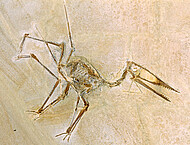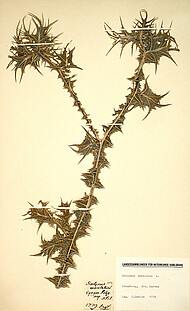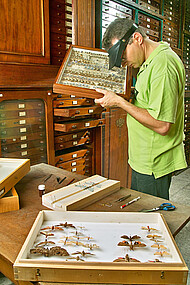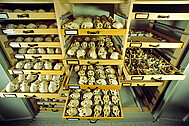Natural History Collections
A major portion of the museum´s ca. 5 million specimens is stored in collection rooms separate from the public exhibition. However, these collections are readily accessible to scientists and many objects can also be borrowed for the purpose of research, education and exhibition.
Natural History Collections document the organic and anorganic diversity on earth and the changes taking place. They also contain the vouchers of scientific works deposited for future examination. Among them the so called “type-specimens” are of greatest importance, as they form the basis of species descriptions. If new species are being discovered and the necessary diagnostic characters are not being mentioned in the original descriptions, it is necessary to re-examine these original specimens. Such taxonomic problems have to be resolved on a regular basis by the examination of type specimens.
Another function of collections is to provide safely identified specimens for comparison which increases the quality of additional identifications. The diagnostic characters are usually perfectly preserved in museum specimens, e.g. in pressed plants or dried beetles. Thus, they are much better suited for this purpose than drawings or photographs. When working with the scientific literature a reference collection can be invaluable.
Scientific collections also document the area of distribution of a given species (chorology), the diversity and abundance of species (biodiversity research) and their conservation status. The relationships of a species with its biotic and abiotic environment (ecology) can be investigated using the detailed information of collection records. Modern databasing of thousands of specimens, e.g. in the course of faunistic studies, can result in new and exciting discoveries.
Palaeontological collections cover the diversity of extinct organisms. They serve similar purposes as biological collections. Moreover, they are important evidence for dating throughout the geological history. Geological collections represent documents of the anorganic nature, i.e. rocks and minerals. Their chemical composition can be analysed and the conditions of their origin can be investigated. Such research is often the basis for the commercial use of rocks and minerals as raw materials.
Modern analytical methods allow us to isolate traces of environmental pollutants, proteins, or DNA from specimens of different ages. Usually, such analysis can be done none-destructively, i.e. only very little material is required leaving the specimen largely intact. Systematists and taxonomists use DNA-sequencing for the investigation of phylogenetic relationships. Also, environmental research can detect changes in atmosphere, climate or pollutants by the analysis of museum specimens. Thus, scientific collections are invaluable archives to document such changes and look back into past centuries.
The enlargement of collections is carried out by the museum´s staff during the field work of research projects, by the acquisition of private and public collections, and by selective purchase of important objects.










